On View
The New-York Historical Society’s New Mission: Telling the Forgotten Stories of Women
The highlight is the museum's collection of Tiffany lamps, many of which were designed and made by women.
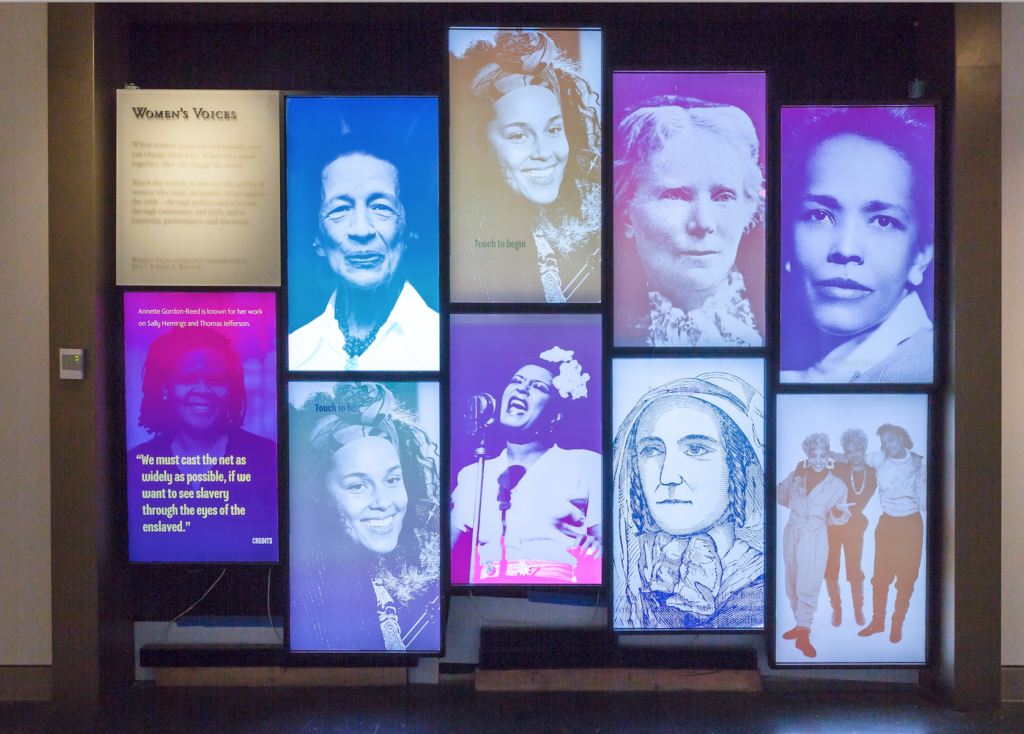
The highlight is the museum's collection of Tiffany lamps, many of which were designed and made by women.

Sarah Cascone

The United States has a handful of institutions dedicated to women’s art and specific great women. But the Center for Women’s History at the New-York Historical Society (NYHS), which opened April 29, is something else: an institution dedicated fully and specifically to telling the forgotten stories of women’s history.
Part of the Henry Luce III Center for the Study of American Culture on the museum’s fourth floor, formerly an open storage facility for 40,000 objects from the museum’s collection, the newly christened institution focuses on a variety of material. Prominent among its displays is an impressive array of colorful leaded glass lamps by Tiffany Studios—and if the connection between Tiffany lamps and women’s history isn’t clear, that just shows the important work that the Center is doing in reclaiming overlooked voices.

Multiple examples of the Dragonfly shade in the Gallery of Tiffany Lamps at the New-York Historical Society. Courtesy of the New-York Historical Society/Corrado Serra.
The display continues the theme of one of the NYHS’s most popular shows of recent years, “A New Light on Tiffany: Clara Driscoll and the Tiffany Girls,” an endeavor that became the driving force behind the new center. Before that 2007 exhibition, “people believed that the lamps that came out of the studio were designed by Louis C. Tiffany himself,” assistant curator Rebecca Klassen told artnet News.
The show’s groundbreaking research proved that the women employed by Tiffany Studios weren’t just producing the studio’s luxury lamps. Clara Driscoll and her team actually designed some of the brand’s most iconic designs, including the famed Wisteria Table Lamp.
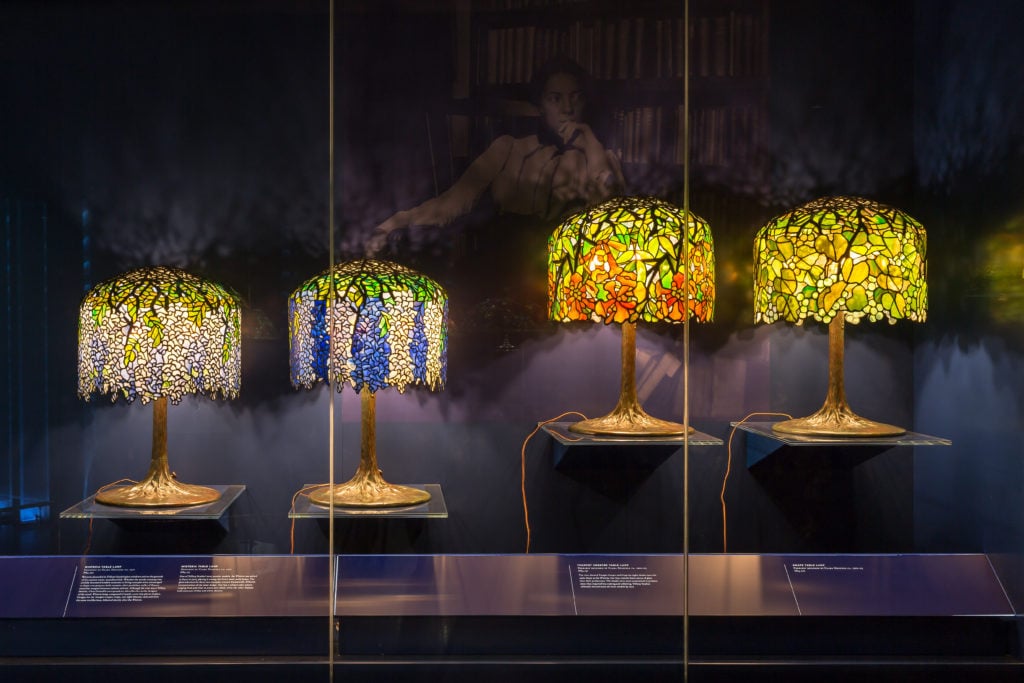
In 2005, the New-York Historical Society discovered the hidden history of Clara Driscoll and her Women’s Glass Cutting Department, who designed and created iconic Tiffany lampshades at the turn of the 20th century. Courtesy of the New-York Historical Society/Corrado Serra.
“It was the advent of domestic electrification, so these were really luxury objects,” said Klassen, pointing out that each lamp is a unique object, due to the endless variety of glass produced in the Tiffany Studios. “Tiffany was really a devotee of color… it’s a really painterly sensibility.”
Beyond the gorgeous finished products, the exhibition reveals the steps of production, with sheets of uncut Tiffany glass and the metal patterns used to cut each little shape to fit the design. There’s even the chance to try your hand at selecting the colors for a Dragonfly shade, at an interactive display outfitted with LED lights with colors you control.
The museum’s impressive selection of 132 Tiffany lamps, which includes pieces made by the men’s factory, which generally focused on less ornate, more straightforward geometric designs, as well as the output of the Tiffany Girls, comes entirely thanks to a 1984 donation from Egon Neustadt.
“He was a pioneer of collecting Tiffany,” said Klassen, noting that “they were really maligned” when Neustadt began buying his first lamps in 1935.
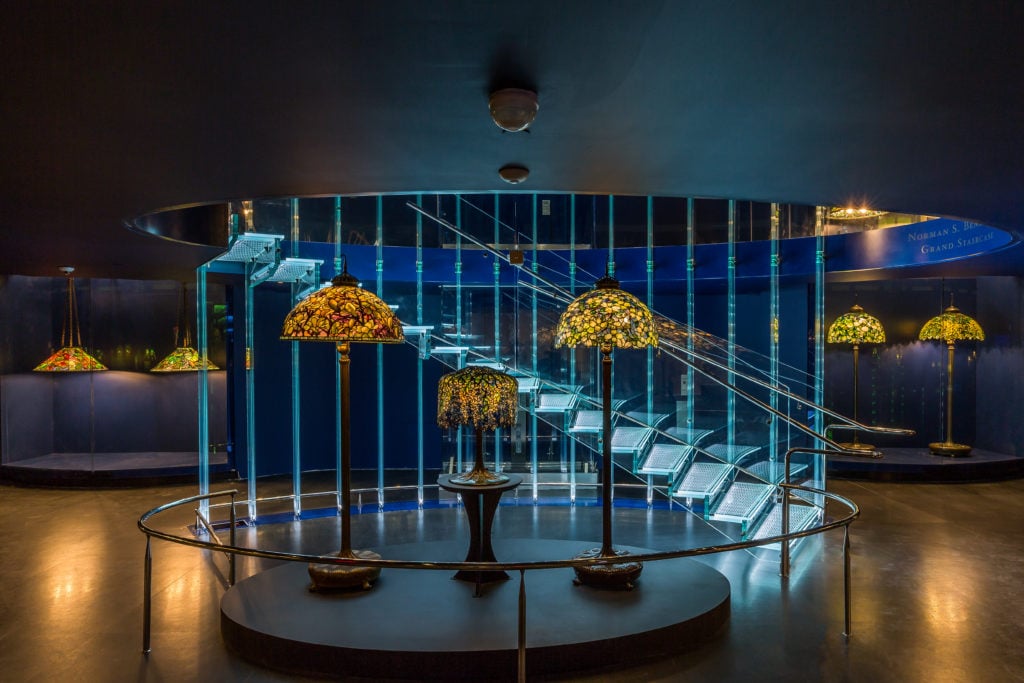
The Gallery of Tiffany Lamps, designed by Czech architect Eva Jiřičná, comprises a 4,800-square-foot, two-story space measuring nearly a city block with its soaring glass Norman S. Benzaquen Grand Staircase. Courtesy of the New-York Historical Society/Corrado Serra.
A grand total of 100 lamps are displayed in a bi-level glass space designed by Czech architect Eva Jiřičná. “The glass and steel is a nice counterpoint to the sometimes ornate lamps themselves,” said Klassen, pointing out how fitting it is to have a woman architect behind the project. (The rest of the $35 million renovation was led by PBDW Architects.)
The center also includes the Women’s History Gallery, which will host two to three rotating exhibitions a year. The first, titled “Saving Washington,” opened March 8, just in time for International Women’s Day. (The center as a whole was originally scheduled to open in 2016.) On view through July 30, the show focuses on the contributions made by women to the early republic.
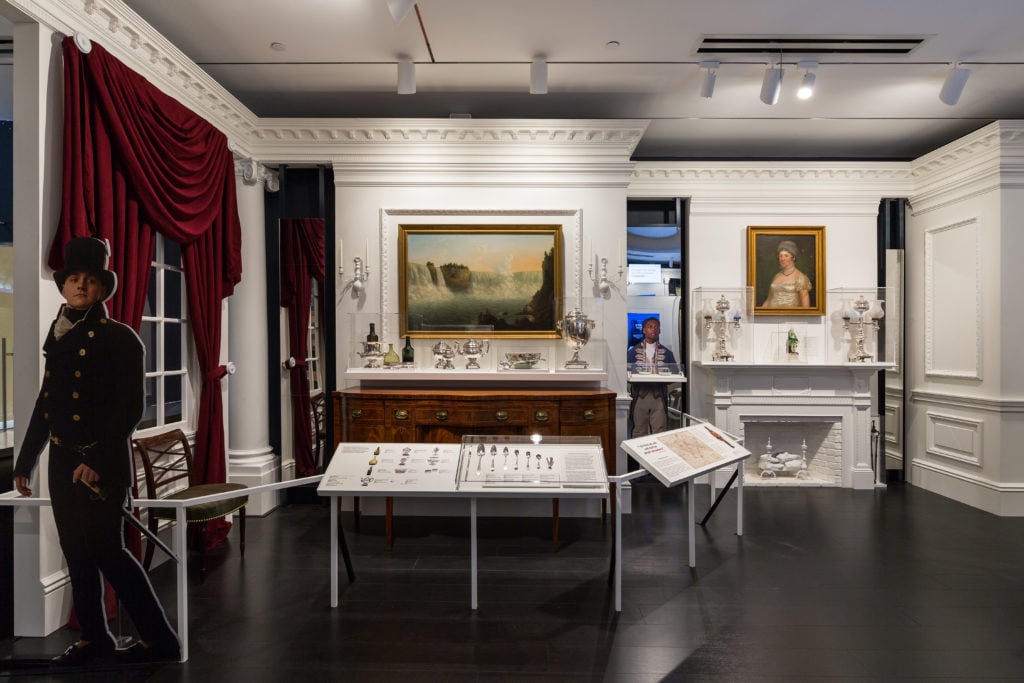
Installation view of “Saving Washington.” Courtesy of the New-York Historical Society/Corrado Serra.
“This is everyone’s story, and it should be thought of that way,” said Valerie Paley, director of the center and curator of the exhibition, explaining that the museum’s aim is to amplify the stories of women who have been historically marginalized.
The current show focuses largely on First Lady Dolley Madison, who of course literally saved Washington when she took his famed Landsdowne portrait by Gilbert Stuart while fleeing the burning White House during the War of 1812. It ends with the Seneca Falls Convention in 1848, the first women’s rights convention.
“We think of women as being tangential to the founding story, but that’s just because they weren’t written in,” Paley added.
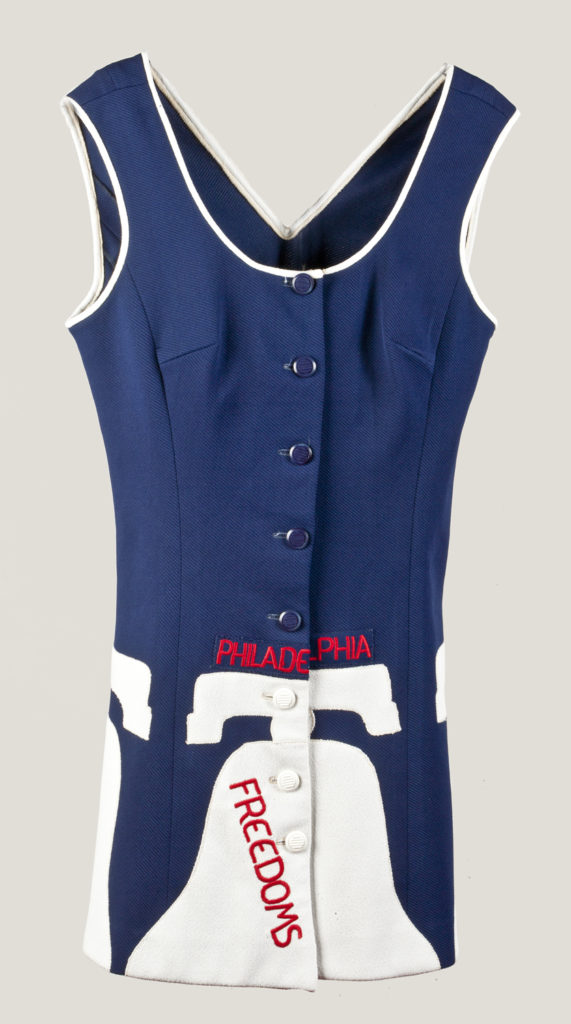
A tennis dress from the archive of Billie Jean King. Courtesy of the New-York Historical Society/Corrado Serra.
In the hallway between “Saving Washington” and the Tiffany lamps, there’s a display case dedicated to tennis star Billie Jean King. A champion for social change in addition to her on-court dominance, King donated her archive, including a pair of the blue Adidas sneakers she helped design and donned in 1973, when she beat Bobby Riggs in the infamous “Battle of the Sexes” match, to the NYHS in 2016.
Rounding things out is “Women’s Voices,” an interactive display highlighting the historic contributions of women to the city and the US as a whole. This includes big names like Elizabeth Cady Stanton, Madonna, and Patti Smith, overlooked historical figures such as Native American leader Molly Brant, and anonymous groups such as Irish servants that nonetheless were collectively important to New York.
“Women’s history is a complicated network of ideas and individuals,” said the museum’s Sarah Gordon of the project, which will only continue to grow over time.
Less immediately relevant is a display of silver from the museum’s collection—many by the “other” Tiffany, Louis’s father Charles Louis—although curator Debra Bach was quick to point out that many of the pieces were either made for or owned by women. “It’s certainly part of the larger story,” she said.
In addition to the new center, the fourth floor will also continue to showcase the depth and breadth of the NYHS collection. But where the former Luce Center held case upon case of artifacts without labels, the new one contains 15 display cases with themes such as toys, slavery, the Hudson River School, and bicycling, the latter represented via a creation of a riding outfit Driscoll designed for herself.

The new Henry Luce Center at the New-York Historical Society. Courtesy of the New-York Historical Society/Corrado Serra.
The 1,250 objects on view—including a section of the trunk of the long-dead pear tree planted by Peter Stuyvesant and a 22-gallon punch bowl presented to Revolutionary war hero Marquis de Lafayette upon his 1824 return to the US—are accompanied by digital touch screens that in turn offer 643 pages of background.
“We are very much the repository of the city’s memory,” said Mike Thornton, associate curator of material culture, of the 200-year-old institution. Other highlights he pointed out included a small version of the Diana weather vane that once stood atop the old Madison Square Garden: “She caused quite a ruckus because she was the first public nude sculpture in New York City.”
Of more recent vintage are artifacts from the 9/11 attacks. “We were among the first to go down to Ground Zero to collect objects,” Thornton said. More recently, he added, the center was “certainly acquiring a very good collection of protest art”—suggesting that some day in the not-too-distant future, the new women’s center could present a show on the Women’s March, the most recent chapter of New York City’s women’s history.